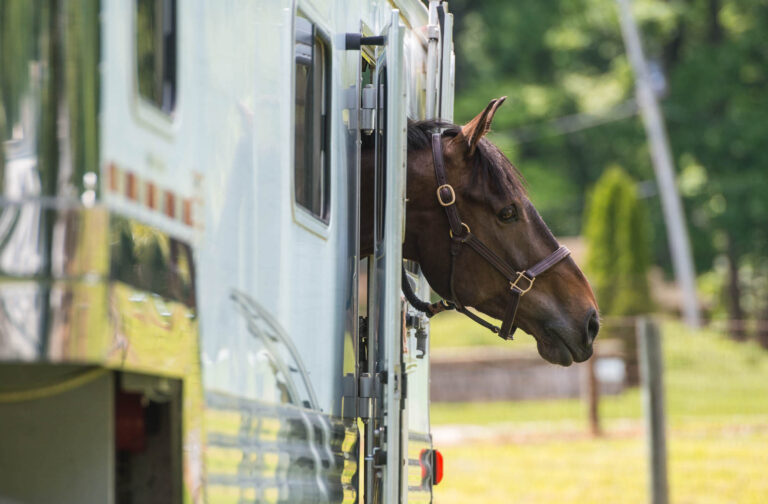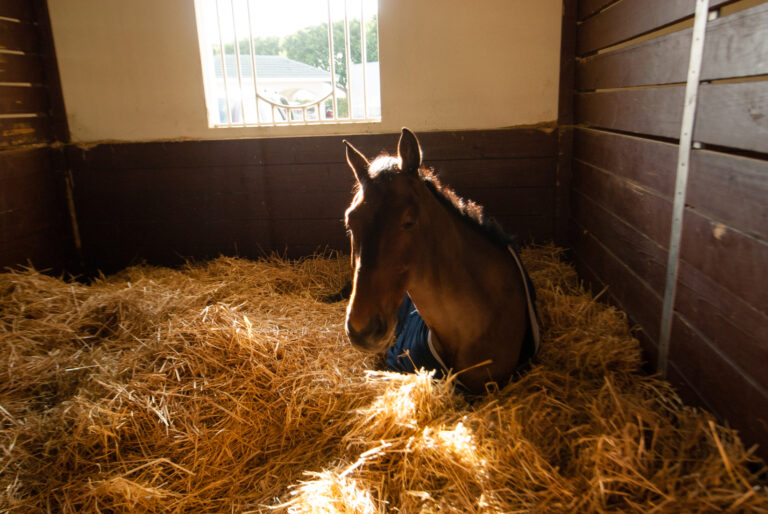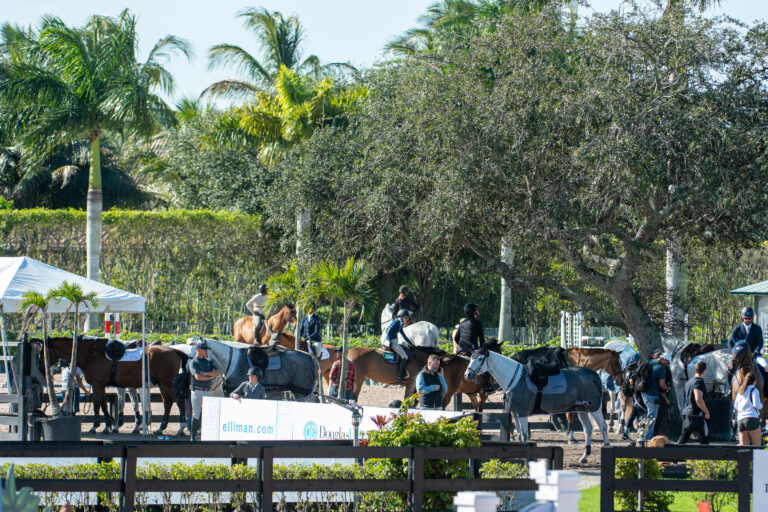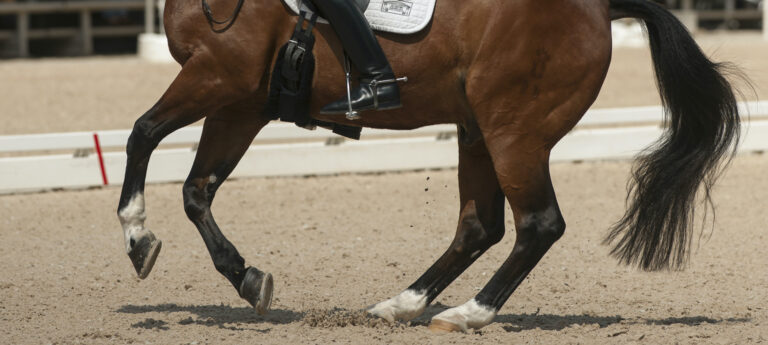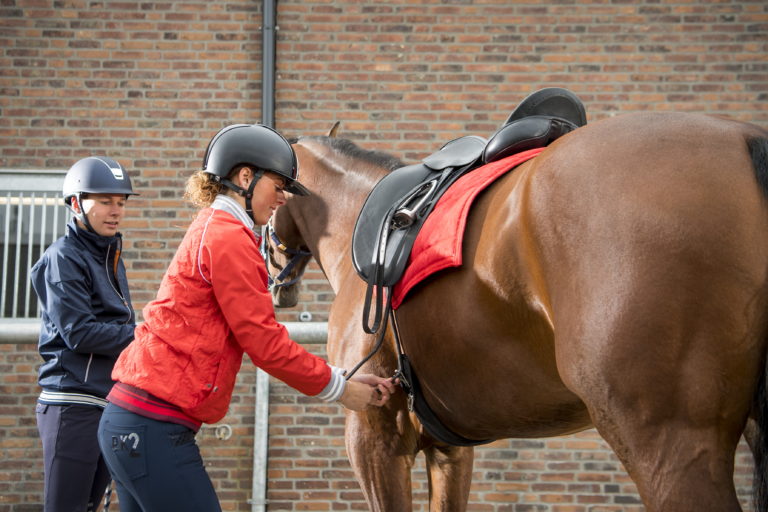Q: My Hanoverian mare feels lower on the right side, which causes me to lose contact with my right seat bone. I am wondering if I have a problem with my seat or if my horse is somehow lower on the right side. She is sound and healthy and has regular vet checkups.
Name witheld by request
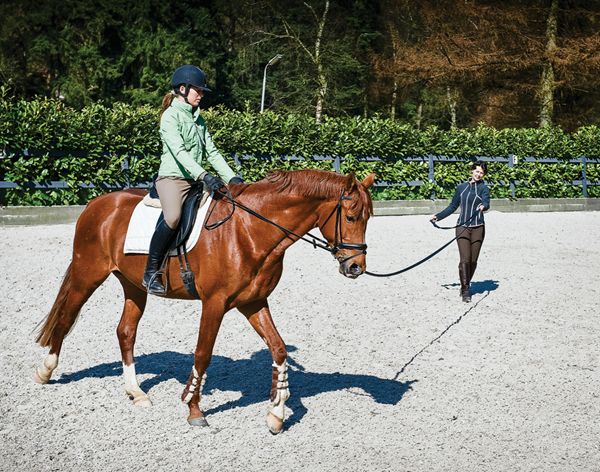
A: Asymmetry is part of nature. We all have noticed eyes, toes and other body parts that are larger, smaller or differently shaped from side to side. Also, how those parts are used varies from side to side. Humans and horses exhibit handedness, the tendency to favor or use one side more than the other. Those with the greatest athletic powers will be able to use both sides to greater effect. Basketball players who can shoot from either hand may have more success just as riders and horses who can use both sides equally may have an advantage in perfecting dressage movements on either hand. The rest of us must struggle to make ourselves and our horses function equally on our good and bad sides.
When you say your horse has regular veterinarian checkups, I am assuming it has been determined that the horse is symmetrical over her hindquarters with no obvious dropping of one hip over the other, no problems in the stifle, gaskin or quarters and no glaring physical issues that would cause you to feel you are losing your right seat bone.
Many of us will sit more to one side than the other. This can cause the saddle to compress unevenly over time. This, in turn, accentuates the crooked sitting, and the saddle’s unevenness gets worse. If it has not been done, have a good saddle fitter take a look at your saddle. When your saddle is square, we can move on to horse and rider.
Many riders sit heavier to one side than the other. They collapse one hip even when standing on the ground. This can cause twisting of the pelvis during some work, which can cause a lessened ability to use one’s leg aids on one side. I once heard three-time national championship competitor Shannon Peters tell riders to keep their navels lined up with their horses’ withers. This provides a good visual image. I recommend you find a trainer who places emphasis on the importance of position, both of horse and rider. This person can evaluate you from all angles as you ride and make adjustments to your sitting so that you feel more even on the horse. If you have access to mirrors, use them. Riding straight toward the mirror, observe if one shoulder is higher than the other. Repeat in lateral work and keep your eye on your symmetry. How it looks and how it feels may be quite different. I favor longe-line lessons to help a rider develop a centered position on the horse. Often during longe-line lessons a student will comment how foreign and wrong it feels when her position is corrected. Our brains and bodies lie to each other, so we feel we are right when we may be sitting quite wrong. To correct position errors takes much time, repetition and effort. An instructor who makes it a priority is helpful.
We know horses can also be one-sided and exhibit handedness. By using gymnastic work, increasing engagement and through lateral bending, we can help the horse develop his musculature on both sides. Such gymnastic work might be as elementary as riding voltes or, as horse and rider progress, using the entire repertoire of lateral exercises that dressage offers. For example, one possibility would be riding changes of hand using zigzags in the walk and trot. If you and your horse have mastered half pass, employ this exercise to better your work from side to side, paying close attention that angle, bend, tempo, line, etc. mirror each other as you zig or zag.
Even if you are still learning, this exercise can be done—again in walk and trot—in leg yield. A ground person/trainer will be helpful to ensure that your horse is traveling straight, stepping with her hind legs underneath herself in the bending exercises as well as equally on both sides. Over time, as the horse gains strength on her bad side, she should feel, travel and carry the rider the same from side to side.
That being said, as any FEI trainer can attest, some horses will persist in some degree of handedness even as the training continues up through the levels, requiring the rider to be creative when riding the movements on either side. Attaining symmetry is a continuing quest.
Jeanie Hahn is a USDF Certified Instructor through Second Level as well as a USDF bronze, silver and gold medalist. In partnership with her husband, Verne, and daughter, Nora Batchelder, she owns and operates River House Hanoverians, which has hosted American Hanoverian inspections for 25 years, imported 250 Hanoverians from Germany and bred many more on site and using its stallions.


